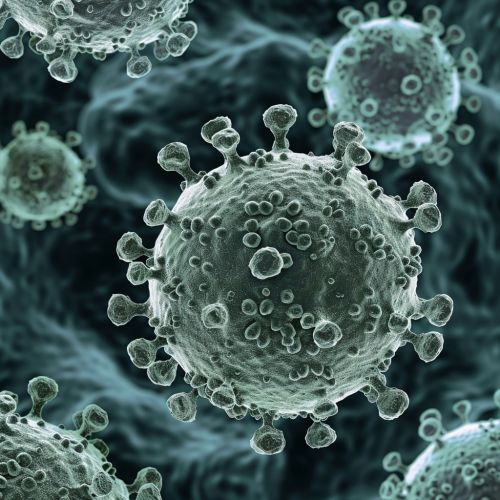Norovirus
Introduction
Norovirus, also known as the winter vomiting bug, is a highly contagious virus that causes gastroenteritis, an inflammation of the stomach and intestines Learn more about Gastroenteritis. The virus is named after the original strain "Norwalk virus," which was discovered in Norwalk, Ohio, in 1968 Learn more about Norwalk, Ohio.
Classification
Noroviruses belong to the Caliciviridae family of viruses. They are classified into seven different genogroups (GI to GVII), which are further divided into different genetic clusters or genotypes. Of the seven genogroups, GI, GII, and GIV infect humans.


Transmission
Norovirus is transmitted primarily through the fecal-oral route, either by consumption of contaminated food or water or by direct person-to-person spread. Environmental and fomite contamination are also important modes of transmission. Airborne transmission via aerosolized vomit is particularly efficient, with as few as 20 virus particles being sufficient to cause infection.
Symptoms
The symptoms of norovirus illness usually begin 12 to 48 hours after exposure and last for 1 to 3 days. The most common symptoms include nausea, vomiting, diarrhea, and abdominal pain. Some people may also experience low-grade fever, headache, and body aches.
Diagnosis
Diagnosis of norovirus is typically based on the patient's symptoms and the clinical setting. Laboratory confirmation can be made by detecting the virus in stool or vomit samples using reverse transcription polymerase chain reaction (RT-PCR) Learn more about Polymerase chain reaction.
Treatment and Prevention
There is currently no specific treatment for norovirus infection. Management of the illness is supportive, focusing on maintaining hydration and electrolyte balance. Prevention of norovirus infection involves proper hand hygiene, safe food handling, and environmental disinfection.
Epidemiology
Norovirus is the most common cause of acute gastroenteritis worldwide. It is estimated that norovirus causes 19 to 21 million cases of acute gastroenteritis in the United States each year, resulting in 1.7 to 1.9 million outpatient visits, 400,000 emergency department visits, 56,000 to 71,000 hospitalizations, and 570 to 800 deaths.
Research
Research on norovirus is focused on understanding the virus's structure and life cycle, developing diagnostic tests, and creating vaccines and antiviral drugs. Several candidate vaccines are currently in clinical trials.
